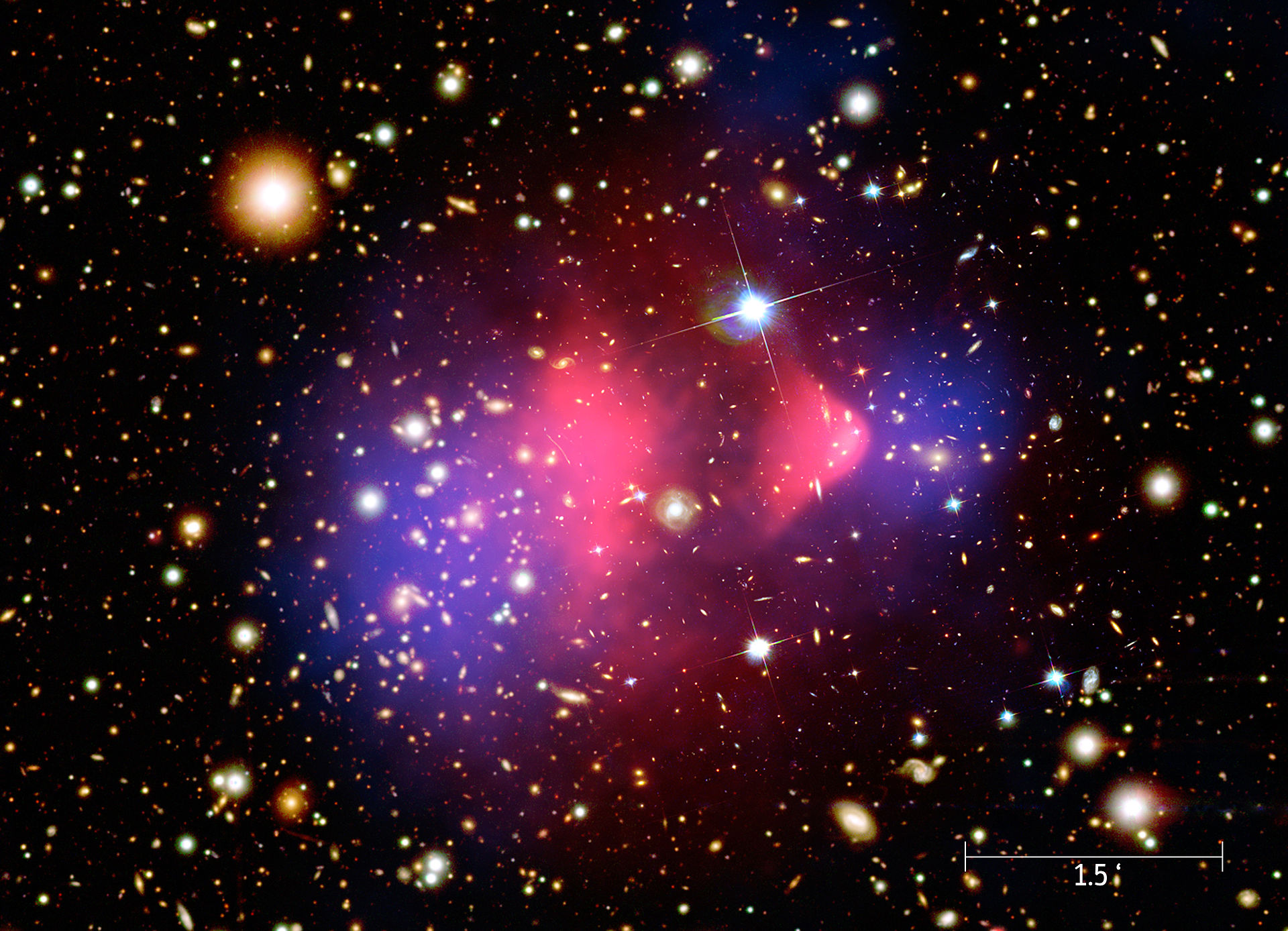First DAMPE data promises insights into the nature of dark matter
According to the Chinese Academy of Sciences, anomalies in the DAMPE data could be the "result of nearby cosmic ray sources or exotic physical processes."
By Brooks Hays
Nov. 30, 2017

China launched the Dark Matter Particle Explorer satellite in 2015. Photo by Qu Jingliang/European Pressphoto Agency
Scientists working on the Dark Matter Particle Explorer mission may have found hints -- but not direct evidence -- of dark matter.
The DAMPE mission involves the collaboration of dozens of scientists, all searching for insight into the nature of dark matter. This week, the group published their first paper -- in the journal Nature -- using data collected by the DAMPE satellite.
The DAMPE satellite is designed to look for evidence of decaying WIMPs, or weakly interacting massive particles, a dark matter candidate. The space observatory features a stack of interwoven detector strips capable of measuring high energy gamma rays, electrons and cosmic ray ions.
Researchers have yet to directly confirm the existence of dark matter, but scientists hypothesize the collision of dark matter particles like WIMPs yield ordinary particles and antiparticles.
Now, for the first time, scientists may have proof that dark matter collisions indeed produce odd particle pairs, electrons and positrons.
Positrons are the antimatter counterpart of the electron. Together the duo form cosmic rays. So far, DAMPE has measured 1.5 million pairs of cosmic ray-forming
electrons and positrons above a specific energy threshold. However, when researchers plotted the number of pairs against their energy, they failed to produce a smooth curve as expected.
According to the Chinese Academy of Sciences, the break in the curve could be the "result of nearby cosmic ray sources or exotic physical processes" -- like the collision of dark matter particles.
"It may be evidence of dark matter," said Chang Jin, CAS researcher and leader of the DAMPE mission.
DAMPE researchers say more evidence is needed to explore the unusual spectral blip revealed by the latest data. Even if the break in the curve isn't evidence of dark matter, the data anomalies could help scientists better understand other phenomena responsible for the production of cosmic, including black holes, pulsars and galactic collisions.
https://www.upi.com/Science_News/20...he-nature-of-dark-matter/9221511988997/?nll=1
According to the Chinese Academy of Sciences, anomalies in the DAMPE data could be the "result of nearby cosmic ray sources or exotic physical processes."
By Brooks Hays
Nov. 30, 2017
China launched the Dark Matter Particle Explorer satellite in 2015. Photo by Qu Jingliang/European Pressphoto Agency
Scientists working on the Dark Matter Particle Explorer mission may have found hints -- but not direct evidence -- of dark matter.
The DAMPE mission involves the collaboration of dozens of scientists, all searching for insight into the nature of dark matter. This week, the group published their first paper -- in the journal Nature -- using data collected by the DAMPE satellite.
The DAMPE satellite is designed to look for evidence of decaying WIMPs, or weakly interacting massive particles, a dark matter candidate. The space observatory features a stack of interwoven detector strips capable of measuring high energy gamma rays, electrons and cosmic ray ions.
Researchers have yet to directly confirm the existence of dark matter, but scientists hypothesize the collision of dark matter particles like WIMPs yield ordinary particles and antiparticles.
Now, for the first time, scientists may have proof that dark matter collisions indeed produce odd particle pairs, electrons and positrons.
Positrons are the antimatter counterpart of the electron. Together the duo form cosmic rays. So far, DAMPE has measured 1.5 million pairs of cosmic ray-forming
electrons and positrons above a specific energy threshold. However, when researchers plotted the number of pairs against their energy, they failed to produce a smooth curve as expected.
According to the Chinese Academy of Sciences, the break in the curve could be the "result of nearby cosmic ray sources or exotic physical processes" -- like the collision of dark matter particles.
"It may be evidence of dark matter," said Chang Jin, CAS researcher and leader of the DAMPE mission.
DAMPE researchers say more evidence is needed to explore the unusual spectral blip revealed by the latest data. Even if the break in the curve isn't evidence of dark matter, the data anomalies could help scientists better understand other phenomena responsible for the production of cosmic, including black holes, pulsars and galactic collisions.
https://www.upi.com/Science_News/20...he-nature-of-dark-matter/9221511988997/?nll=1

